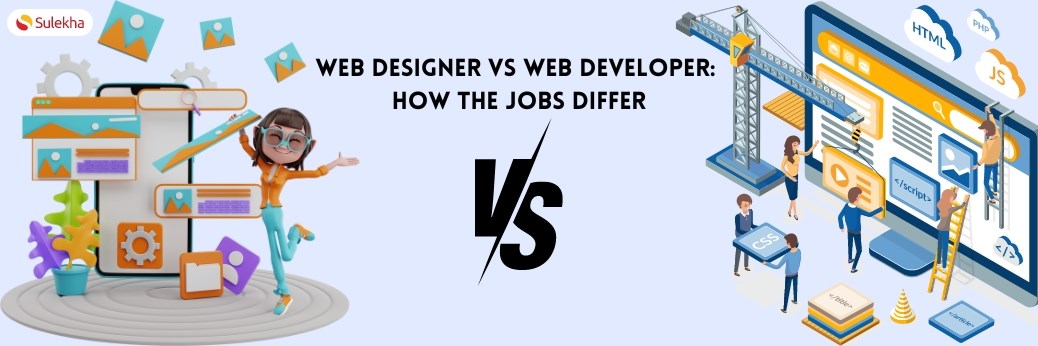What is application lifecycle management (ALM)?

Application Lifecycle Management (ALM) is a comprehensive approach that oversees the entire lifecycle of an application, from initial planning and development to deployment and maintenance. By integrating processes, tools, and methodologies, ALM ensures that applications are delivered while meeting quality and performance standards throughout their operational life.
The Role of DevOps and Business Teams in Successful Application Lifecycle Management
In Application lifecycle management, DevOps and the business team will work together to deploy, deliver, and function applications that meet business needs.
ALM encompasses related disciples like:
• Requirements management
• Computer programming
• Software development
• Software testing and maintenance
• Change management
• Continuous integration
• project management and more
As we discussed above, to create an application, we need a dedicated team processing the application with industry-best ALM tools to streamline the process effectively and outsource the quality product.
ALM tools like Jama Software, MeisterTask, Codebeamer, Visure, Jira, Microsoft Azure DevOps, and Tuleap help automate IT operations, leading to quick deployment and better maintenance.
Implementing a successful application lifecycle management strategy requires understanding the stages of ALM and creating a clear strategy and plan for development, deployment, and beyond. Teams must treat every step of the process equally important for a successful product launch. Because organizations increasingly rely on applications to achieve business objectives, it's essential to have tools and technologies to help deliver apps that meet users' needs.
Creating a successful application lifecycle management (ALM) strategy involves understanding the different stages of ALM and developing a clear plan for building, deploying, and maintaining applications. Every step in the process must be treated as necessary for a product to launch successfully. As businesses rely more on applications to meet their goals, having the right tools and technologies to deliver apps that satisfy user needs is crucial.
What is application lifecycle management?
Application Lifecycle Management (ALM) refers to the comprehensive process of managing the life cycle of an application from initial conception through to deployment, maintenance, and eventual retirement. It integrates people, processes, and tools to ensure that an application meets business needs effectively and efficiently throughout its life.
Stages of application lifecycle management
ALM includes five stages, each requiring different tool deployment, expertise, and efficiency achievement. Project managers commonly refer to this process as an ALM workflow. The workflow consists of two stages:
The waterfall model
The Waterfall model is a structured approach to software development that follows a linear sequence of stages. It begins with requirements gathering, where all project specifications are documented based on stakeholder input. Next is the system design phase, where the architecture and components of the software are planned.
After design, the implementation stage involves coding the software according to the established specifications. Once coding is complete, the software undergoes testing to identify and fix any issues before it is finally deployed for users. This model emphasizes thorough documentation and clear progression through each stage, making it easier to manage but less flexible for changes.
Agile development
Agile development is a flexible and iterative approach to software development that emphasizes collaboration, customer feedback, and rapid delivery of functional software.
Unlike traditional methods, Agile breaks projects into smaller, manageable units called iterations or sprints, allowing teams to adapt to changes quickly and efficiently.
Each sprint typically lasts a few weeks and culminates in a working product increment that stakeholders can review.
This continuous feedback loop helps ensure that the final product aligns closely with user needs and expectations. Agile methodologies, such as Scrum and Kanban, promote regular communication among team members and encourage a culture of improvement, making it easier to respond to evolving requirements throughout the development process.
The 5 stages of application lifecycle management
Requirements management
In this stage, stakeholders play a crucial role in defining the why and purpose of applications. Stakeholders will know their audience and plan their application design and legal compliance standards. So, having a detailed and holistic understanding of business applications will help them avoid unnecessary problems.
In this stage, the project manager will set the timeline, clear objective, application requirements, team responsibility, and communication pathways.
Development
The development team can begin building applications after setting a clear objective for the application requirement. In this development phase, technical, product marketing, and sales teams will cooperate efficiently to ensure the product meets the objectives. The team will set a timeline and testing requirements during the development stage.
Testing and quality assurance
In the Testing and Quality Assurance (QA) stage of Application Lifecycle Management (ALM), the product undergoes rigorous validation to ensure it meets the specified requirements and is free from defects. During this phase, various types of testing, such as unit testing, integration testing, and system testing, are conducted to verify that the product functions correctly under different scenarios.
QA engineers create and execute test cases, report any issues found, and collaborate with the development team to resolve defects. The goal is to ensure that the application is reliable, secure, and performs as expected before it is released to end-users. This stage also involves validating the product against business objectives and user needs, ensuring it delivers quality and value. Quality assurance is essential to minimize risk, prevent costly post-launch fixes, and enhance user satisfaction.
Deployment
Once the application is tested, it is deployed to users. Moreover, deployment is the final stage of the application lifecycle. This involves moving the product from a development or staging environment to a live production environment. During deployment, the team ensures that the software runs smoothly, all configurations are correct, and any potential issues are addressed. It may also include post-deployment monitoring to ensure the system’s stability and performance in real-world usage.
Continuous maintenance and optimization
Now, in this stage, the application is related to the actual user. After release, they might face bugs or flaws not encountered before in the testing stage or development.
Application performance management (APM) software monitors and optimizes applications' performance, ensuring they run efficiently and meet user expectations. Configuration management tools help manage and maintain the settings of software and hardware systems, ensuring consistency and compliance across various environments. This allows organizations to meet business objectives and enhance user experience.
Additionally, emerging technologies or business scenarios may necessitate updates to current applications. DevOps teams frequently utilize continuous delivery (CD) pipelines to automate the maintenance and management of applications. When a developer writes new code for an application, continuous delivery solutions automate the creation of a testing environment for that code. If the new code satisfies the testing criteria, it is automatically deployed. CD allows teams to implement updates and fix issues, minimizing application downtime rapidly.
When executed effectively, Application Lifecycle Management (ALM) simplifies the application and software development process while ensuring all stakeholders can contribute their input.
Conclusion:
Application Lifecycle Management (ALM) ensures that applications are developed, deployed, and maintained effectively throughout their lifecycle. The collaboration between DevOps and business teams is crucial in aligning technical efforts with business objectives, ensuring that applications meet functional and operational requirements. Organizations can streamline workflows, enhance productivity, and deliver high-quality applications by utilizing ALM tools and processes.
Choose a training provider to learn IT courses
Java training | J2EE training | J2EE Jboss training | Apache JMeter trainingTake the next step towards your professional goals in Information Technology
Don't hesitate to talk with our course advisor right now
Receive a call
Contact NowMake a call
+1-732-338-7323Related blogs on Laravel to learn more

10 Entry-Level IT Jobs and What You Need to Get Started
10 Entry-Level IT Jobs and What You Need to Get Started

How to Become a Web Developer
How to Become a Web Developer

Web Designer vs. Web Developer: How the Jobs Differ
Web Designer vs. Web Developer: How the Jobs Differ

Elixir programming, the magical solution to build new applications
Elixir is the new functional, concurrent, general-purpose programming language that runs on the Erlang virtual machine (BEAM).[3] in elix Everything is an expression; the Built-in tooling is designed for managing dependencies, code compilation, runni
The new Angular 8.0 and Ivy
The buzz around ivy and angular version 8.0 is there for a prolonged time, but the angular team has finally come forward and revealed some of its features which are designed for a better user and developer experience. The future of angular is ivy say

AngularJS still shines as the friendly Web App framework!
AngularJS is a JavaScript web application framework which is easily integrated with the web page created with HyperText Markup Language (HTML). Applications created using AngularJS JavaScript resides inside <script> ... </script> tags in the HTML pag

What Are The Alternative Languages Compiling To JavaScript?
The arena of JavaScripthas been expanding from server side development to client side web development to mobile apps development to database engines. This unprecedented growth needs to satisfy the demands of every developer from various programming p

Why NodeJS Has an Edge over PHP?
The web is flooded with technologies from the very simple to the complex ones. New and improved technologies are continuously being developed to replace the old ones. Here a comparison has been made between Node.js and PHP to show that Node.js is bet

What Are the Characteristics that Define a Good User Interface?
Creating a good user interface design can often be challenging for user interface developer, trying to achieve success in every aspect without there being conflict of interest. For instance, with the objective to design eye-catchy UI, the ease of use

5 Most Common User Interface Errors that Destroy your UI Design
In the online computing field, mistakes can prove to be costly and can also mean low web conversions. Such errors are pathways to dangerous pitfalls and have to be avoided in order to progress in the web world. UI design has the power to make a winni
Latest blogs on technology to explore

From Student to AI Pro: What Does Prompt Engineering Entail and How Do You Start?
Explore the growing field of prompt engineering, a vital skill for AI enthusiasts. Learn how to craft optimized prompts for tools like ChatGPT and Gemini, and discover the career opportunities and skills needed to succeed in this fast-evolving indust

How Security Classification Guides Strengthen Data Protection in Modern Cybersecurity
A Security Classification Guide (SCG) defines data protection standards, ensuring sensitive information is handled securely across all levels. By outlining confidentiality, access controls, and declassification procedures, SCGs strengthen cybersecuri

Artificial Intelligence – A Growing Field of Study for Modern Learners
Artificial Intelligence is becoming a top study choice due to high job demand and future scope. This blog explains key subjects, career opportunities, and a simple AI study roadmap to help beginners start learning and build a strong career in the AI

Java in 2026: Why This ‘Old’ Language Is Still Your Golden Ticket to a Tech Career (And Where to Learn It!
Think Java is old news? Think again! 90% of Fortune 500 companies (yes, including Google, Amazon, and Netflix) run on Java (Oracle, 2025). From Android apps to banking systems, Java is the backbone of tech—and Sulekha IT Services is your fast track t

From Student to AI Pro: What Does Prompt Engineering Entail and How Do You Start?
Learn what prompt engineering is, why it matters, and how students and professionals can start mastering AI tools like ChatGPT, Gemini, and Copilot.

Cyber Security in 2025: The Golden Ticket to a Future-Proof Career
Cyber security jobs are growing 35% faster than any other tech field (U.S. Bureau of Labor Statistics, 2024)—and the average salary is $100,000+ per year! In a world where data breaches cost businesses $4.45 million on average (IBM, 2024), cyber secu

SAP SD in 2025: Your Ticket to a High-Flying IT Career
In the fast-paced world of IT and enterprise software, SAP SD (Sales and Distribution) is the secret sauce that keeps businesses running smoothly. Whether it’s managing customer orders, pricing, shipping, or billing, SAP SD is the backbone of sales o

SAP FICO in 2025: Salary, Jobs & How to Get Certified
AP FICO professionals earn $90,000–$130,000/year in the USA and Canada—and demand is skyrocketing! If you’re eyeing a future-proof IT career, SAP FICO (Financial Accounting & Controlling) is your golden ticket. But where do you start? Sulekha IT Serv

Train Like an AI Engineer: The Smartest Career Move You’ll Make This Year!
Why AI Engineering Is the Hottest Skillset Right Now From self-driving cars to chatbots that sound eerily human, Artificial Intelligence is no longer science fiction — it’s the backbone of modern tech. And guess what? Companies across the USA and Can

Confidence Intervals & Hypothesis Tests: The Data Science Path to Generalization
Learn how confidence intervals and hypothesis tests turn sample data into reliable population insights in data science. Understand CLT, p-values, and significance to generalize results, quantify uncertainty, and make evidence-based decisions.